Checking Under the Hood: A Brief Look at Little Hills, Flags, and Tickling
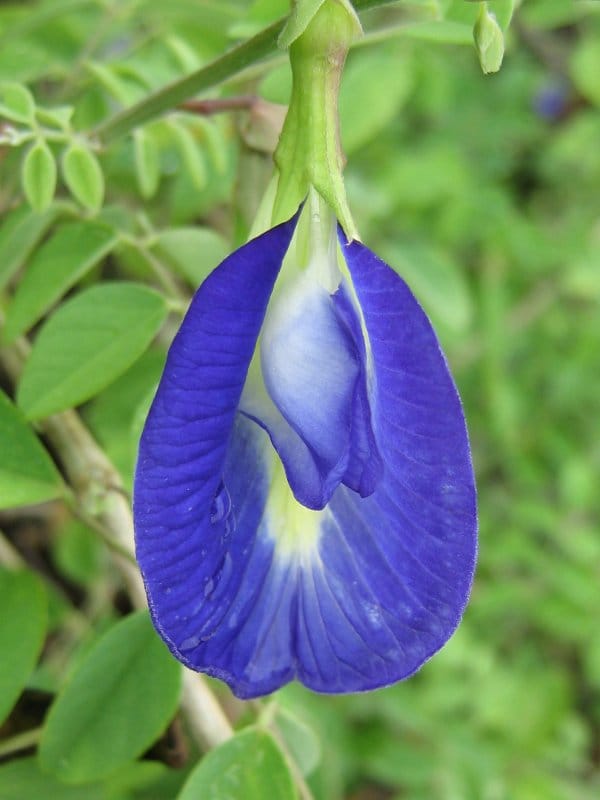
Yes, it looks like what you think.
The first European description and reference to the plant was made in 1678 by a Polish naturalist Jakob Breyne, a brave naturalist who named it based on a resemblance to the clitoris.
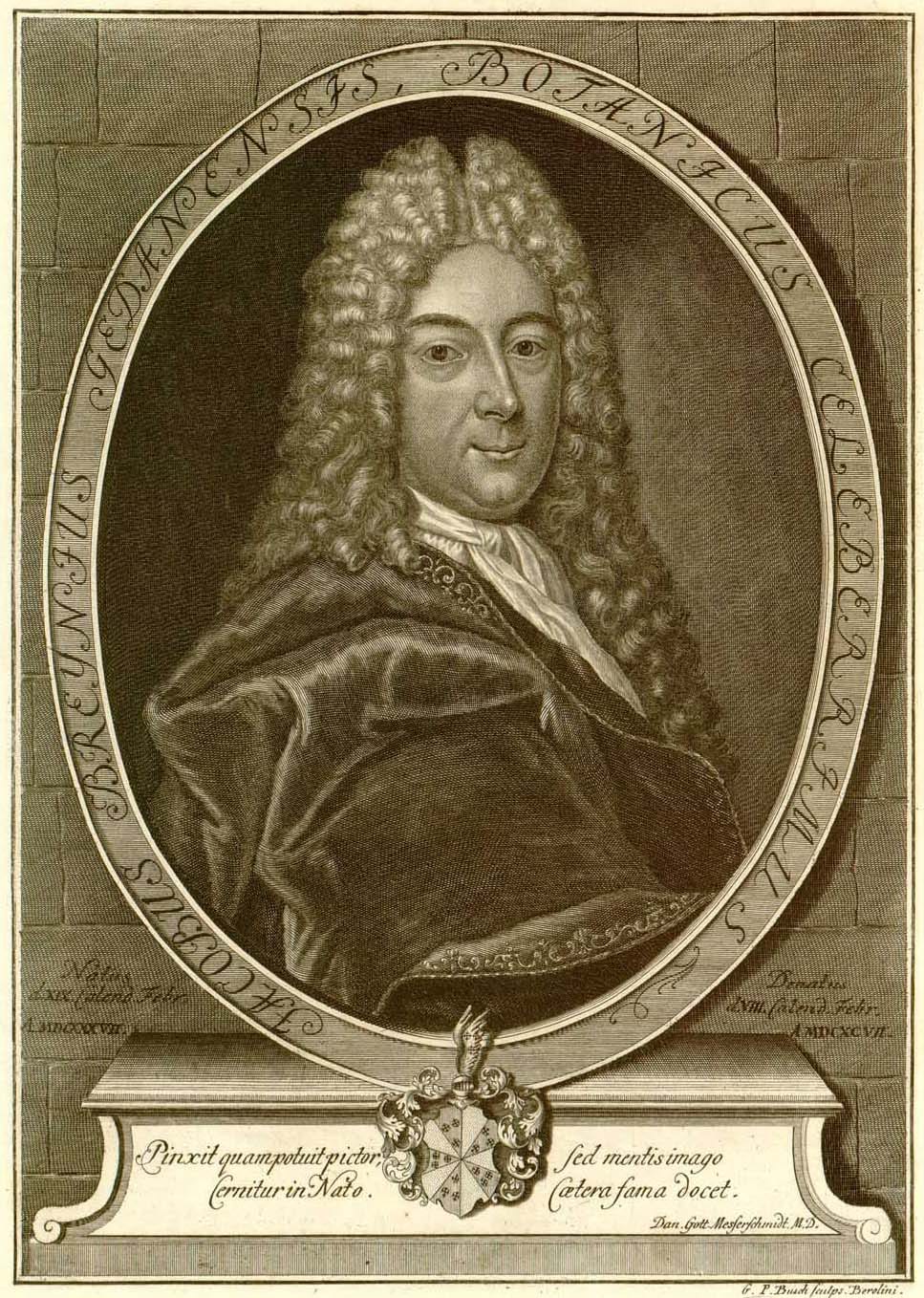
What’s in a Name? The Controversy
Disturbed by the clear reference to the clitoris, other botanists were very upset and proposed different names such as Vexillaria (Eaton 1817) and Nauchea (Descourtilz 1826). Vexillaria comes from a word meaning “flag-like”.
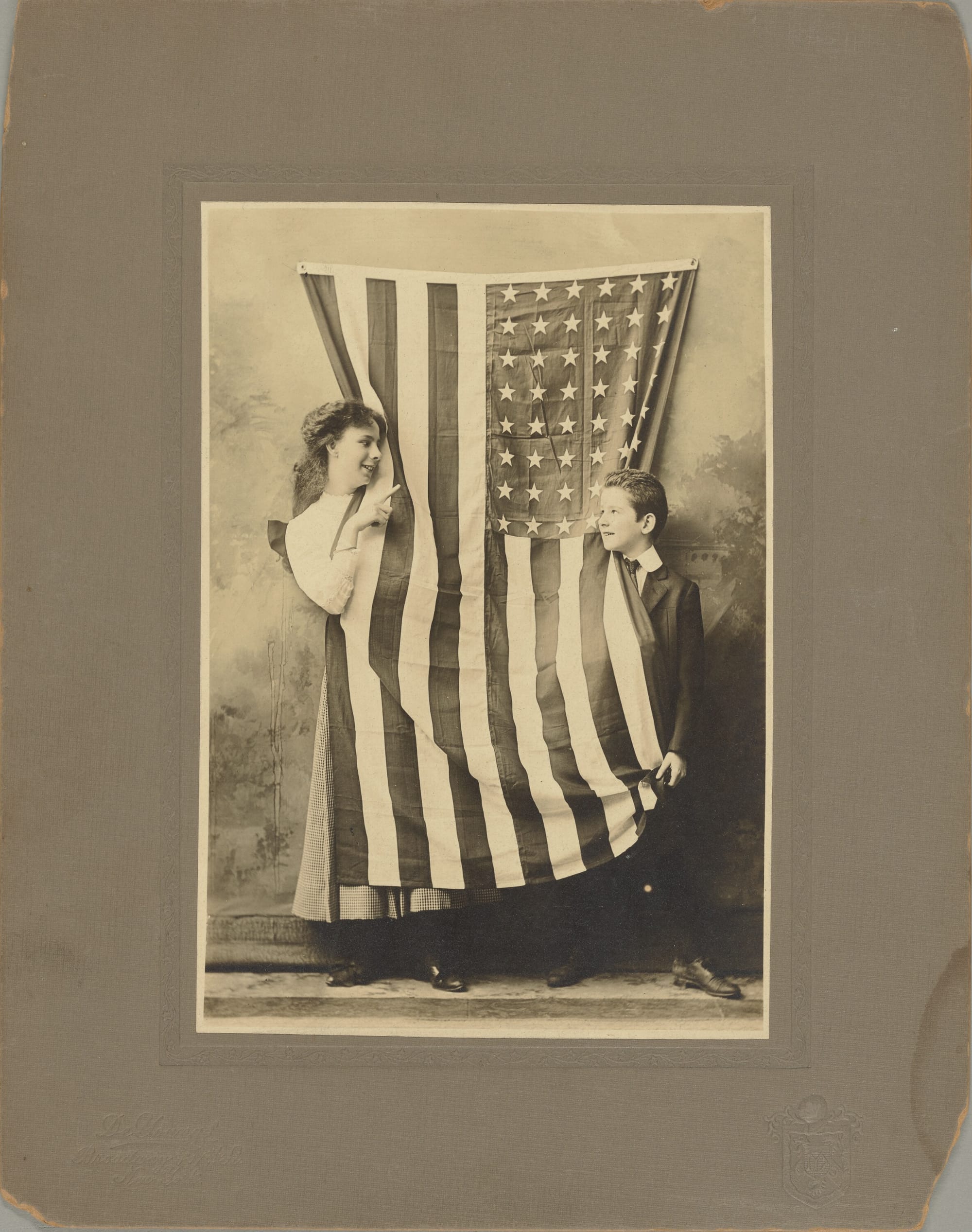
Amos Eaton (1776-1842), the American botanist cited above, had four wives (yes, four, in quick succession) and 12 (yes, twelve) children, so presumably he knew his way around a clitoris. One cannot help but wonder if during conjugal relations, Eaton referred to the hoisting of the flag. But to be fair to Amos, he did champion the cause of higher education for women at a time when this was considered quite a radical notion.
The proposed name “Nauchea” was meant by Descourtilz as an homage to Dr. M. le Nauche, an honorable member of the “La Societe Linneenne de Paris”. Michel Étienne Descourtilz (1775-1836) was a French botanist and historian who had eight sons, so he probably knew how to raise a flag as well. Once again, to be fair and not only to showcase his prudery, Descourtilz, who had married a plantation owner in Haiti, became involved in the Haitian Revolution, helping Toussaint L’Ouverture, the leader of the black revolutionaries. Descourtilz narrowly escaped being executed by the French for treason.
But let us return to the clitoris, a delicate, tiny organ (or glans) that has only one noble purpose: to provide sexual pleasure to the female.
The Etymology
The word itself comes to us through post-Classical Latin from the Hellenistic Greek "kleitorís", which in turn originated from the Ancient Greek "kleíō", meaning “I sheathe, shut”. A noun in the same etymological group, “kleís” has a secondary meaning of a key, a latch or a hook used to close a door. Another association is that of a shroud or hood.

Some medical sources prefer an origin of the Greek word “kleitoriázō”, a verb meaning to tickle towards pleasure. Still other sources merely state that the original word referred to a “little hill”.
Shrouded in mystery, the origins of the term are still subject of a lively, if small, debate (I can't resist pointing out the puns on word usage “shrouded” and “small”).
Moving into more modern times, the clitoris has been abbreviated to “clit”, which, according to the Oxford English Dictionary, originated in the United States around 1958 (in printed works). According to Google Ngram data, the word “clit” has been on a steady and definitive rise since the 1980s, whereas “clitoris” is declining. The proper term “clitoris” peaked around the mid-1970s. Without claiming any expertise in the subject, my guess would be that peak coincides with the Women’s Movement of that time.
Who Discovered the Clitoris Anyway?
The clitoris is a little hill that keeps getting “re-discovered”. According to scholars, for more than 2500 years the clitoris was known and was on equal ground with the penis. But over time, the clitoris began to be omitted in works of physiology. Furthermore, through prominent anatomists such as Galen and Vesalius, the emphasis was shifted to the vagina. Not only was the vagina now merely an inverted penis, but the clitoris wasn’t present in “normal” women.
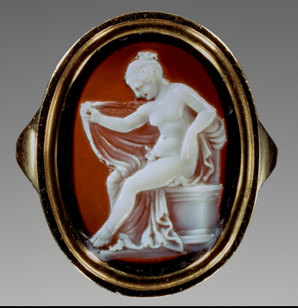
Discovering a New Country
Clitorises (or clitorides, depending on your preferences in pluralization) now begin their sunset hours while vaginas are rising on the horizon. Eventually, however, the little hill continued to be rediscovered (I can’t help having a visual image of flag planting on a anatomical chart — like dropping a pin on a Google map) by a series of male anatomists claiming its discovery.
In 1545, Charles Estienne identified it in the context of a dissection, but thought it was part of the urinary tract. Oops.
Charles had at least one daughter, Nicole Estienne. Nicole was a poet who wrote many criticisms on marriage and men. Her best known work is “Les Misères de la Femme mariée, où se peuvent voir les peines et tourmens qu’elle reçoit durant sa vie”. This poem speaks against age differences between spouses and domestic violence.
Next we find a happier discoverer, Realdo Colombo. In 1559, he was a lecturer at the University of Padova and published a work where he claims to have identified “the seat of women’s delight”. He went on to declare:
Since no one has discerned these projections and their workings, if it is permissible to give names to things discovered by me, it should be called the love or sweetness of Venus.
This seems to potentially give a new meaning to Columbus Day. Instead of honouring Christopher for getting lost and stumbling on land in the Caribbean, we could shift the festivities to this intrepid explorer of anatomy. Think of all the women of the world saying “Thank you for your discovery Mr. Colombo! Who knew?” We could have parades and little children could make models in plasticine, the girl guides could have specially shaped cookies, but let’s not get too silly.
Enter Gabriele Falloppio (yes, he of the Fallopian tubes, who claimed to have discovered them, and yes, there are two p's in Gabriele’s name and only one “p” in tubes). A priest and anatomist, he succeeded Colombo at the university and stated that he, Falloppio, found the clitoris while sailing on a voyage of discovery through the Fallopian tubes. In 1651, he wrote:
Modern anatomists have entirely neglected it… and do not say a word about it… and if others have spoken of it, know that they have taken it from me or my students.
A verbose way of saying “mine, mine, all mine — it’s all about me”. Or perhaps an early form of “fake news”.

Falloppio lived in Padova and shared his home with the German botanist and pharmacologist Melchior Wieland. Originally from Prussia, Wieland had a fascinating life, including being captured by pirates and becoming a galley slave (he was ransomed by his pal Falloppio) — but that is another very long story.
In any case, rumours about the nature of the relationship between Falloppio and Wieland abounded. So, an odd couple confluence in the “discovery” of the clitoris. Well, at least we know why Falloppio didn't name the tubes after a long-suffering wife (as a priest, he never had one).
This New and Useless Part
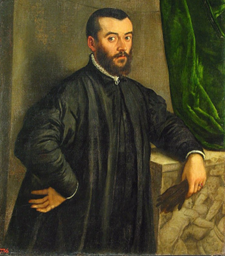
In any case, the aforementioned Vesalius (1516-1564) got quite testy over the whole issue and peevishly commented:
It is unreasonable to blame others for incompetence on the basis of some sport of nature you have observed in some women, and you can hardly ascribe this new and useless part, as if it were an organ, to healthy women.
He finishes his comments by stating:
I think that such a structure appears in hermaphrodites…but I have never once seen in any woman a penis (which Avicenna called albaratha and the Greeks called an enlarged nympha and classed as an illness) or even the rudiments of a tiny phallus.
Interestingly and rather disturbingly, as a young boy Andreas Vesalius dissected cadavers of stray dogs, cats and rats he found in the streets of Brussels.
We might probably assume that Vesalius wasn't much of a ladies man. But he did marry and produce a daughter.
And so, the cycle of suppression, rediscovery, and vilification of the little hill continued.
Race, Misogyny and Freud’s “Immature” Orgasm
Without going too far into the barbaric practice of clitoridectomy, it is worth noting the breathtaking misogyny and racism behind the words of a physician named Jacques Daléchamps.
Very little is known about this foul-minded man, but it is documented is that in the 1500s he wrote that the clitoris was:
… an unusual feature that occurred in almost all Egyptian women [and] some of ours, so that when they find themselves in the company of other women, or their clothes rub them while they walk or their husbands wish to approach them, it erects like a male penis and indeed they use it to play with other women, as their husbands would do... Thus, the parts are cut.
It is believed that routine clitoridectomies were justified and performed in Egypt in part due to Daléchamps’ treatise.
Moving forward in time to the Victorian era, the clitoris became even less significant as people began thinking that, not only were female orgasms unnecessary, but that they were somehow an indication of immorality. Things did not improve when Freud, around 1905, declared that the clitoris was responsible only for “immature” orgasms (as opposed to the “mature” orgasm which could only be achieved by penile penetration).
"C" Words or The Cult of the Clitoris and the Canadian Connection
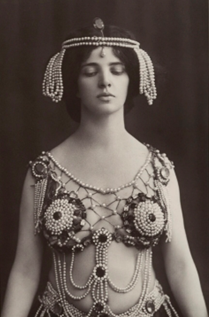
Enter Noel Pemberton Billing, a notoriously right wing British Member of Parliament who published a work entitled “The Cult of the Clitoris” (really, you can't make this stuff up, but it is a catchy title), where he outlined a variety of conspiracy theories and vilified the Canadian born actress and dancer Maud Allan along with Margot Asquith, wife of the then British Prime Minister. A scandalous and salacious libel trial ensued, but Billing eventually prevailed, using the argument (amongst others) that:
… as a medical term, 'clitoris' would only be known to the 'initiated', and was incapable of corrupting moral minds.
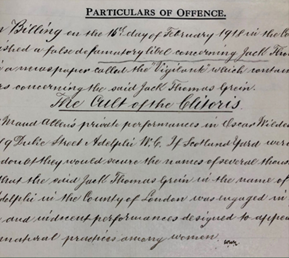
Astonishing double slander of the clitoris. Not only is it responsible for unseemly behaviour of women, the very word itself can corrupt minds.
Although the story is somewhat long and complicated, it is worth recounting in brief. Maud Allan was a Canadian dancer and actress. Born in Toronto in 1873, she notoriously performed topless in a stage version of Oscar Wilde’s play “Salome”. Unsurprisingly, and despite that the performance was a private, by-invitation-only affair, it got a great deal of attention and Billing publicly called her a lesbian, declaring she was having an affair with the wife of the Prime Minister. Furthermore, he asserted she was in cahoots with the German government to compromise and blackmail the British on moral grounds — a significant bit of scandal given that all this was happening in 1918 during World War I.
In any case, the trial lasted six days, and Billing won hands-down to the cheering of those in the crowded courtroom.
As a small sidebar, it is probable that both Allan and Asquith were involved in a lesbian relationship. In fact, Asquith paid for Allan’s apartment from 1910 to 1928.
Another slightly odd sidebar: In 1903, Billing married Lillian Maud Maria Schweitzer (note the middle name) and daughter of German émigrés (note irony). Lillian died in 1923 in Australia (!) and the couple never had any children. In 1937 he married his secretary, a woman named Elsie Veronica Owen Jones nee Farmer, with whom he had at least 2 children. Elsie had been married to Owen Jones, who died in New Zealand in 1955. There is likely an interesting story here, but that is too far a digression for this essay.
Shadow Banning
Although I haven’t personally verified this information, according to some, in 2023, Facebook shadow-banned the word “clitoris” (amongst other terms on female genitalia). (Shadow-banning is a term used to describe the act of hiding or limiting a user’s content, without telling them it has been done.) Facebook told users that they “must not promote sexual and reproductive health products or services” and that ads promoting such things must be “targeted to people aged 18 and over.”
Below is a link to an Instagram post that prompted this essay. What I found completely objectionable was the woman’s inability to say or write “clitoris” or “clit”, while she bemoaned a euphemism used in a romance novel (not exactly highbrow literature, but still…). Perhaps I’m being too judgmental — she may have been astutely avoiding a shadow-ban.

An instagram post about a euphemism for "clitoris".
Penis Good, Clitoris Bad
Given the present direction of the United States, it is unsurprising that that the “clitoris” must be neither seen nor heard in American schools. Although diagrams of male external genitalia are perfectly acceptable, those of women are not. I’m guessing that the artwork of the American painter Georgia O’Keefe will not be prominently featured on any school bulletin board.
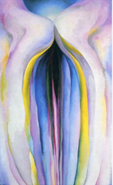
Mulva? Gipple? Loliola?
In the 1980s situation comedy “Seinfeld”, Jerry cannot remember the name of his date other than recalling that it rhymed with a female body part. Click below and treat yourself to a laugh! Poor forgotten clitoris…
A clip of "Dolores" from "The Junior Mint" episode of Seinfeld (1993).
No, Young British Women Discovered the Clitoris
In this hilarious clip from the 1989 film “Shirley Valentine”, the protagonist is sitting at a bar cackling with three female friends.
The femaie anatomy scene from the film Shirley Valentine (1989).
Das kitzelt! ― That tickles!
Last fun fact: The German slang word for clitoris is “kitzler”. The word comes from “kitzeln”, meaning to tickle.
So "tickled pink" or "tickle my fancy" may be more brazen than they appear.
Would you like to read other posts? If so, please click the home page link below:

You, Dear Reader, are much needed and appreciated.
Everything written requires a reader to make it whole. The writer begins, then you, dear reader, take in the idea and its image, and so become the continuation of its breath. Please subscribe so that my words can breathe. Consider this my hand, reaching out to yours.


